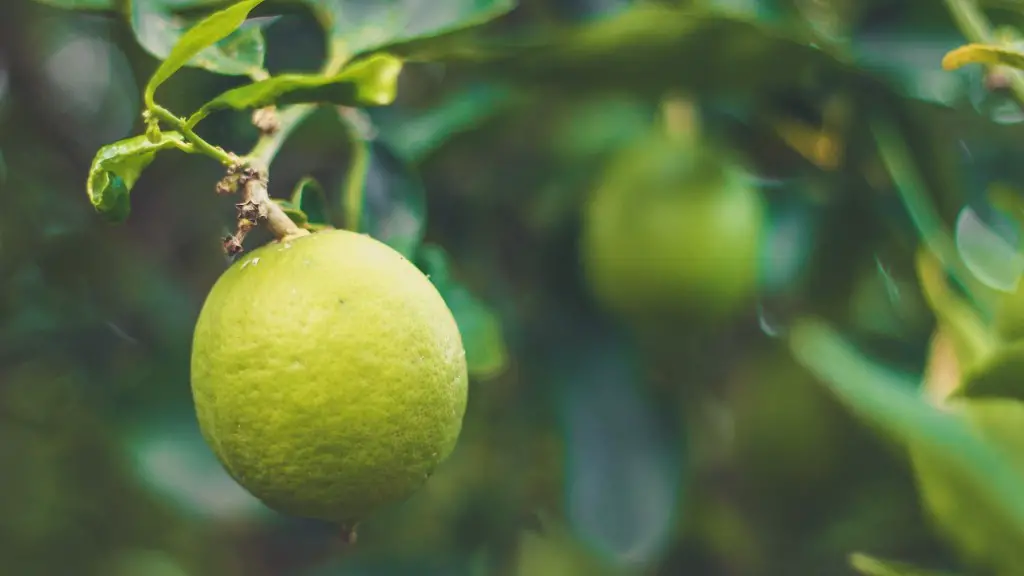Structural Characteristics of Angiosperms
Angiosperms, also known as flowering plants, are the most widespread and diverse group of organisms in the world. They have an evolutionary advantage over other types of plants because they produce attractive and fragrant flowers which attract pollinating insects. They are distinguished from other plants by their unique structures and features, including the presence of an ovary or female organ, stigma, ovules, sepals, petals, and stamens.
What is a Palm Tree?
A palm tree is a type of angiosperm native to tropical and subtropical areas around the world. It has a simple, unbranched stem with a crown of large, compound fronds. The tree produces small, fleshy fruits consisting of a central kernel encased in a fibrous husk. Palm trees are important sources of food and timber, as well as providing a range of environmental benefits in humid and dry climates.
Are Palm Trees Angiosperms?
Yes, palm trees are classified as angiosperms because they share the same structural characteristics. They have an ovary, stigma, ovules, sepals, petals, and stamens, just like other angiosperms. In fact, palm trees are a member of the Arecaceae family, which is a type of angiosperm.
Adaptations for Tropical Climates
Palm trees have adapted to tropical climates with outstanding efficiency. For example, their fronds are structured to be resistant to wind damage, and the shape of the canopy is designed to catch the rain effectively. The leaves are also covered with a thick wax, which provides excellent protection against adverse environmental conditions.
Uses of Palm Trees
Palm trees have long been used for various purposes throughout the world. For example, the leaves are often used in construction, weaving, and paper production. The fruits are eaten in many parts of the world, and the trunk is used to make furniture and other items. In some places, the palm tree is even used as a source of fuel and biofuel.
Environmental Benefits
Palm trees are renowned for their environmental benefits. They are able to store large amounts of carbon dioxide, which can help to reduce the effects of climate change. They also help to regulate temperatures, reduce noise levels, and provide habitat for a variety of species.
Conclusion
It is clear that a palm tree is an angiosperm and it carries with it a range of unique characteristics and adaptations to tropical climates. Palm trees are an important part of many cultures and ecosystems, providing food, materials, and environmental benefits.
Effects of Palm Trees on Biodiversity
Palm trees have long been recognised as biodiversity hotspots, due to their ability to support a range of species. The tree can provide food, shelter, nesting sites and breeding resources to birds, mammals, amphibians and reptiles. In addition, palm trees help to support the regeneration of other plant species, making them an essential part of many ecosystems.
Economic Benefits
Palm trees are an important source of economic activity in many areas of the world. The timber and fruit can be harvested and sold, while the leaves and fronds can be used to produce a variety of woven products. In many places, palm trees provide employment for locals and a source of income for surrounding communities.
Conservation of Palm Trees
Due to their value to local economies and ecosystems, there is a need to protect and conserve palm trees. This can be done through replanting activities, protecting threatened species, and reducing deforestation where possible. By doing this, we can ensure that palm trees are around for many generations to come.
Impact of Global Warming on Palm Trees
The effects of global warming on palm trees remains largely unknown, although there is evidence that some species may be affected by rising temperatures and changes in precipitation levels. Rising sea levels could also have a negative impact on coastal locations where many of the world’s palms are grown. Further research is needed to understand how global warming will change the future of palms and other angiosperms.
Alternative Uses of Palm Trees
Palm trees have been utilised in a wide range of applications. For example, some species are used in traditional medicine and others are used to produce biofuels. Palm stalks can also be used to make baskets and other items, while their oil is an important ingredient in many cosmetics and beauty products.
Risk of Invasive Species
The introduction of foreign species of palms can cause significant problems in local ecosystems. In many cases, these invasive species can out-compete native species, leading to a reduction in biodiversity and other impacts. Efforts to reduce the risk of invasiveness should be a part of any palm tree project.



